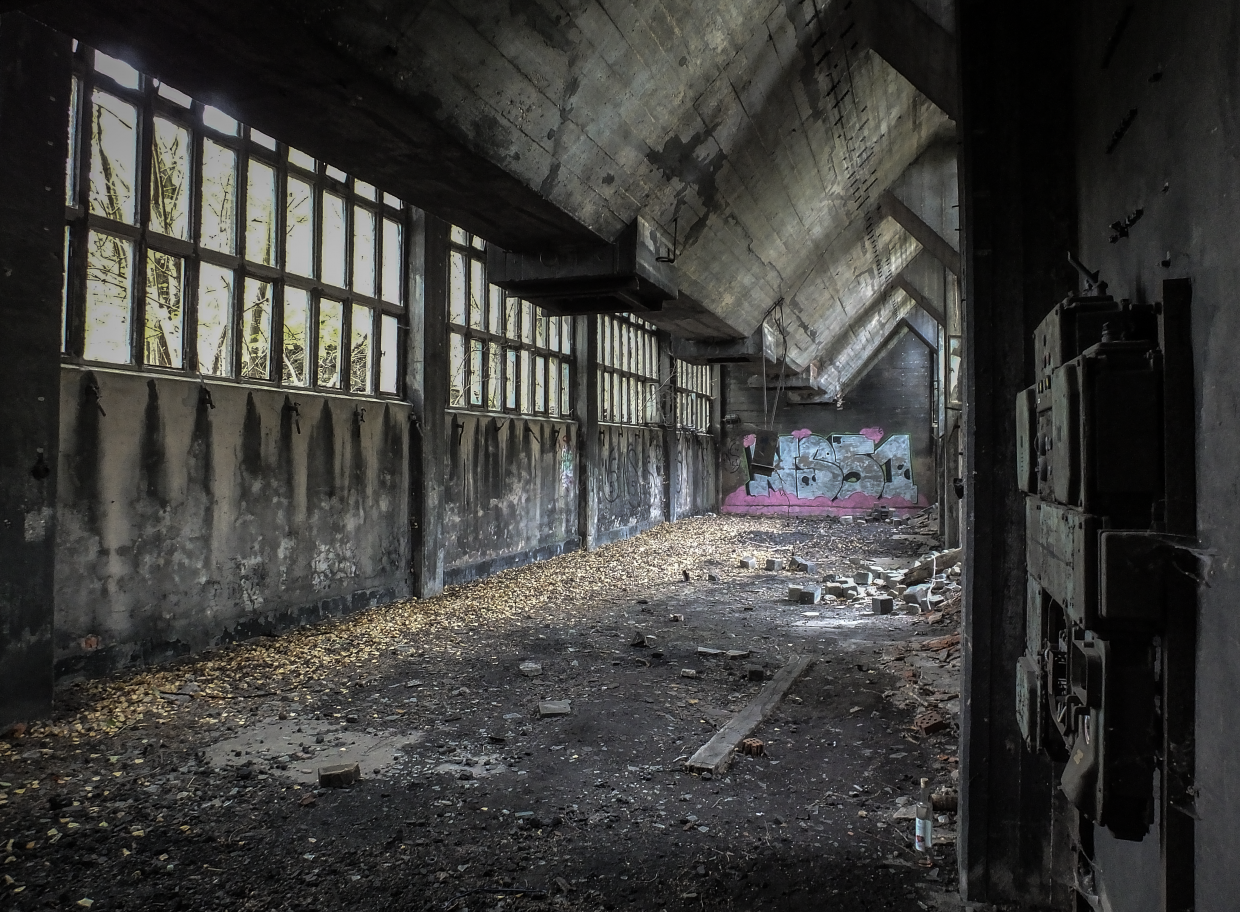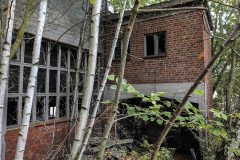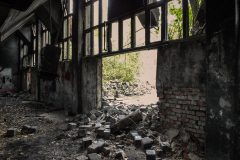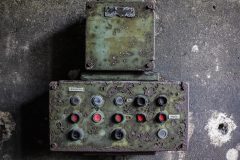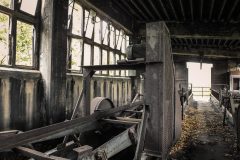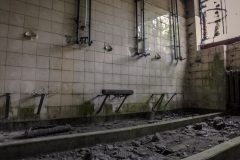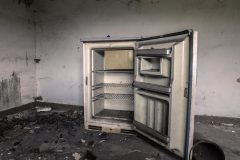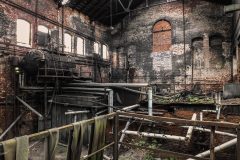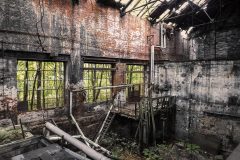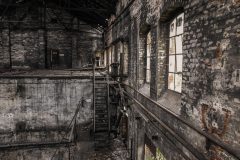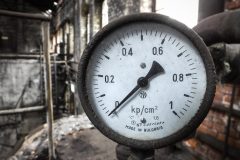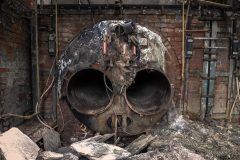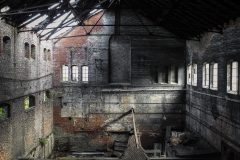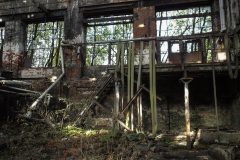As early as the spring of 1898, the construction of a new gas plant began in the western part of the city. It had its own rail connection for coal transport. In the first construction phase, five horizontal retort furnaces (three with 9 retorts, two with 6 retorts) produced a daily output of 5,000 m³. A main pipeline with a nominal width of DN 400 was laid from the new gas plant to Alexanderstraße, from where the network branched out further. In 1901, over 1.5 million m³ of town gas were already produced. The expansion of the network and the increase in capacity continued. Due to pressure fluctuations, pipelines were constantly replaced and new lines were laid. The introduction of “cooking gas” in 1910 led to the doubling of the plant’s capacity. At that time, a production of 15,000 m³/d was initially achieved, which corresponded to an annual output of 2.6 million m³. Gas consumption had quadrupled between 1888 and 1912.
While the delivery of illuminating gas had almost come to a standstill during this period, the consumption of heating and cooking gas had increased 120-fold and reached a value of 1,118,039 m³ in 1910. Coin-operated gas meters were introduced, and after inserting a coin, consumers could briefly use gas for cooking and heating purposes, corresponding to the gas price. In 1911, 176,000 m³ of gas were consumed by the population using these coin-operated machines, and by 1912, over 1,000 such machines were installed in households, particularly in small rented apartments. In 1912, there were a total of 938 public gas lanterns in Eisenach, including single and multiple gas incandescent lights, so-called “Lukasleuchten” and “Pharoslapen”. In the suburbs, there were still only five oil lamps. The center had already installed the first electric arc lamps. Street lighting cost 46,600 marks, which corresponded to 1.20 marks per inhabitant annually. In this year, 150 gas lanterns were already remotely ignited and extinguished by the factory, saving considerable costs for lantern watchmen. 300 street lamps were still under construction.
The Eisenach gas works ceased operations in 1982, as the technical facilities were worn out. The location on the outskirts of the city, with a rail connection, was favorable for the relocation of the coal trade. The site was used as a transshipment station for coal trains until 1990. With the expansion of the natural gas network and other energy sources, the demand for coal fuel in Eisenach declined sharply, and the coal trade was discontinued.
Our location rating:
